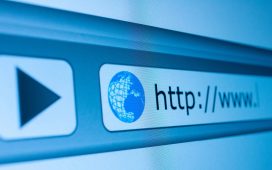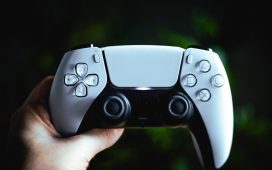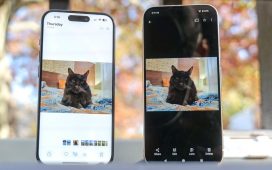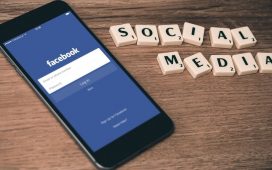Highlights
- Before transferring data from your Android to an iPhone, make sure to fully back up your Android device to avoid any issues during the migration process.
- Google provides a simple and user-friendly cloud backup option for your Android data. Alternatively, you can also manually back up your key folders to a computer or external drive.
- Apple’s Move to iOS app and accessing your Google account on your iPhone are the two most effective ways to transfer your data from Android to iPhone. Additionally, remember to transfer services, documents, and gaming data to ensure a complete transition.
Trading in your trusty ole’ Android for your first iPhone can be both exciting and intimidating. Obvious learning curves aside, there is the impending question of how you are going to transfer over all your precious data like photos, messages, and contacts. As it turns out, the migration process can actually be quite smooth and painless, as long as you follow a little preparation.
In this guide, we’re gonna go through some of the options for transferring your data from an Android device to a sparkling new iPhone. Additionally, we’ll also take a look at expert tips on how to back up your Android phone, utilize the transfer tools from Apple and Google, and more. Check out the details below!
Backing Up Your Android Data
Before even thinking about getting started with the data transfer, the first thing that you need to is to fully back up your Android. Think of it as a safety net in case any issues appear during migration process (which, let’s be honest, happens quite often with tech).
Cloud Backup With Google
Luckily, Google has a very simple and user intuitive interface that makes backing up your contacts, photos, videos, calendars and more to their cloud very simple. All you need to do is follow the steps given below.
- Enable backup in Settings > System > Backup and choose what data to protect.
- Tap each data category like Photos and Contacts to include them individually.
- Enable “App data” to preserve preferences, but avoid app backups. That’s because the apps themselves are native to Android OS, and must be re-downloaded on iPhone if you want to use them.
- Hit “Back up now” to trigger an immediate cloud backup of your selected data.
Local Backup To External Drive
If you’re someone with a distaste for cloud backups, or just want some extra redundancy to keep your data safe, consider manually backing up all your key folders to a computer or an external drive:
- Install Android Studio on a Windows or Mac computer and connect your phone via USB.
- Browse to View > Tool Windows > Device File Explorer.
- Navigate files and drag critical folders like DCIM, photos, etc. to copy them locally.
- At this point, you can either keep the data in your computer’s drive as is, or connect an external hard drive and copy all this data onto it.
Either way, with both cloud data and a local backup secured, your Android is now ready for its new life. In case you’re trading it in, or giving it to someone else, make sure to do a quick factory reset, so you don’t have to worry about your information getting leaked.
How To Migrate Your Data To iPhone
Now that you are all done with backing up your data, it is time for the main event: the actual transfer! We’ve come up with the top two ways that you can go about this.
Apple’s Move to iOS App
Apple provides an official Move to iOS app to help transfer your Android data to an iPhone. Here’s how you can leverage it:
1. Download and install the Move to iOS app from the Google Play Store on your Android and open it.
2. Follow prompts on the iPhone to set up as new.
3. On the Apps & Data screen, tap Move Data from Android, and follow the on-screen setup.
4. Keep both devices near each other and turn on the Bluetooth.
5. Scan the code on your iPhone with the Android device and tap to confirm the pairing. Make sure to grant any access permissions if requested.
6. Select the data to transfer: Contacts, Messages, Photos, Videos, etc. and tap on Start.
7. Wait for the transfer to complete, securely unpair your device from the Android, and you should be good to go.
Google Drive File Access
Many Android users already sync lots of data to their Google account. In case you haven’t done that, remember the cloud backup feature that we just went through? Well, once you’ve backed up your data, you can easily access it when setting up your new iPhone.
All you need to do is sign in to your Google account via the iPhone, and all of your emails, contacts, videos, and photos from your Google account will automatically populate onto it.
How To Transfer The Rest: Services, Documents, And More
While your essentials like contacts and photos cover a lot, you’ll also want to migrate over a few additional categories for a truly seamless transition.
- Sync up your Android with media streaming services like Spotify beforehand so playlists, libraries, and recommendations carry over when you sign in on iPhone.
- Don’t forget to export saved passwords from your Android password manager and import them into 1Password or another iOS password manager. This transfers over vital Wi-Fi passwords, web logins, and app credentials.
- Share key documents from your Android to cloud services like Google Drive or Dropbox to quickly access them on your new iPhone later.
- Make sure you know the account details and login credentials for any financial apps, employer software, or healthcare platforms you use to simplify reconnecting them on iOS.
What Happens To Your Gaming Data And Preferences
A huge annoyance when switching platforms is losing your hard-earned gaming progress and app preferences. But with some preparation, you can maintain your achievements and custom settings:
- On your Android, launch every game that you’re currently playing and ensure your progress is linked to your Google Play Games profile, Facebook, Apple account, or email. Verify that it’s properly syncing to the cloud before factory resetting.
- Take screenshots showing your player ID, server details, and other info you’ll need to manually re-link your profiles on iPhone.
- Strongly consider exporting bookmarks, Wi-Fi passwords, and other vital gaming data from your Android password manager and importing them into 1Password on iPhone, so those details seamlessly transfer over.
Frequently Asked Questions
What Android and iPhone models support direct data transfer through the Move to iOS app?
The Move to iOS app can be used to transfer data directly from any Android smartphone or tablet running Android 4.0 or newer, which was first released in 2011. So most relatively modern Android devices within the last five to seven years support it.
On the receiving end, Move to iOS can transfer data to any iPhone model currently capable of running iOS 12.4 or higher. This includes iPhone models as old as the iPhone 5S all the way up through current models like the iPhone 14. Both the Android sending device and iPhone receiving device must have Bluetooth enabled to connect and transfer data locally.
What should I do if I encounter an error during the data transfer?
If you receive an error during the data migration process, don’t panic. The first thing you have to do here is to find out where the issue is occurring – whether it’s within the Android, the iPhone, or if the transfer itself has been corrupted. Issues stemming from your Android could either be because of an OS glitch or improperly backed up data. If it’s coming from the iPhone, connectivity or iCloud errors could be factoring in.
For transfer issues, you do have to check for a few things, like if you have sufficient device storage, Wi-Fi/cellular signal, and if Bluetooth is enabled on both phones in case you’re using the Move to iOS app. Restarting both devices and trying the transfer again usually resolves transient errors.
If the issue still persists, trying an alternate method like moving via cloud storage rather than direct transfer may be more viable. If that’s not cutting it either, you could always try contacting Apple or Android support for troubleshooting assistance.
How can I save battery life on both devices when transferring a lot of data?
It’s important to conserve battery during a large data transfer, especially if you don’t have an outlet to plug into. You could always follow basic battery optimization steps like reducing screen brightness, disabling background app refresh, exiting any apps that you aren’t using, to save on some battery. By minimizing power drain, your transfers run more reliably and have a lesser chance of encountering any errors.












